Silver & Objects
In our Silver and Objects Category, we present a wide selection of silver, often wholly or partly gilded. The section is subdivided into English, European and Colonial. Our collection includes several objects mounted with silver, for example rock crystal, tortoiseshell and mother of pearl.
Our emphasis is always on quality and rarity. We particularly like pieces which evidence the history of the period, or which illustrate a cross-cultural influence.
In our English section, our period covers the Tudors and the Stuarts. Sadly, during the Civil War much silver was lost, often melted down to make coins to pay the troops, so pieces prior to that period are considerably scarcer. With the restoration of Charles II to the throne in 1660, there was a considerable surge in commercial confidence which is reflected in the quantity and varied designs of pieces produced in that period.
In England a full set of silver hallmarks involves a town mark, a date mark and a maker’s mark. It is worth noting however that with smaller pieces, and objects where the silver is being used to mount other materials, it was often considered unnecessary or uneconomic for the piece to be sent to be assayed. Wealthy families commissioned high quality pieces with no thought of them ever being sold in the future, so these were not sent to be assayed, and some pieces were made as diplomatic or trade gifts, so often not hallmarked, It is perhaps surprising to note therefore that some of the best English silver of this period is not marked at all or perhaps marked with a maker’s mark only.
Under our European section, we present a selection of silver and objects from several contrasting areas of Europe. Arguably Germany, Southern Germany in particular, produced the finest and most intricate ‘art objects’ during this period. Hallmarking in Germany involved an assay scrape (showing that the silver had been checked), a town mark, and usually a maker’s mark. Town marks were changed at intervals, and maker’s marks were registered. Very rarely were date letters used, but from the records of town and maker’s marks pieces may be dated reasonably precisely. Styles and decorative types are further aids to dating these objects.
Our collection includes a wide range of Iberian silver and objects. Our final section under this Heading is of pieces produced in the Iberian Colonies, in particular in India for the Portuguese, and in the Americas for Spain, In Spain, various towns had hallmarks, as did individual makers, and there are some recognizable marks for towns in the Spanish Colonies in Central America, However, there was no consistent system of hallmarking in any of these areas. A characteristic of Iberian silver of our period is the heavy weight of silver used. This was because the commodity had become so easily and cheaply available, huge quantities being imported from South America.
As well as German and Iberian silver and objects, our European section includes pieces from Italy, France, the Netherlands, Eastern Europe and Scandinavia.
-
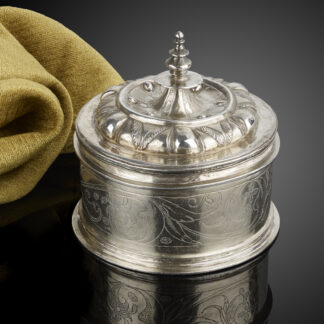
A Fine and Very Rare Renaissance Spanish Colonial Silver Gilt Pyx Marked Underneath for Mexico City 1580/81
£14,500.00 -
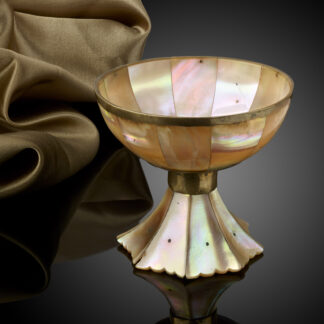
A Small Gujarat Mother of Pearl Cup, with Gilt Copper and Silver Gilt Mounts Late 16th /Early 17th Century
£5,750.00 -
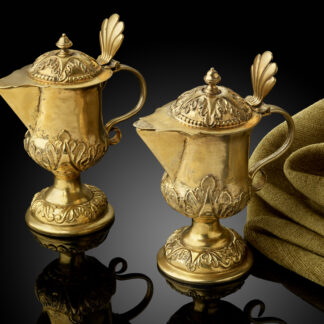
A Pair of Spanish Colonial Silver Gilt Altar Cruets ( Vinjeras ) 17th Century Mexico
£2,950.00 -
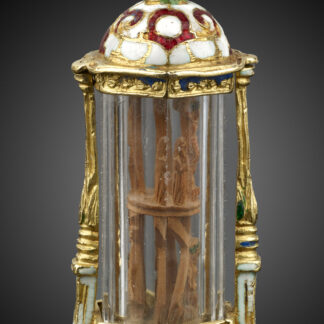
A Very Rare Rock Crystal and Gold Tabernacle Jewel in the Form of a Lantern Mexico, Late 16th Century
£18,500.00 -
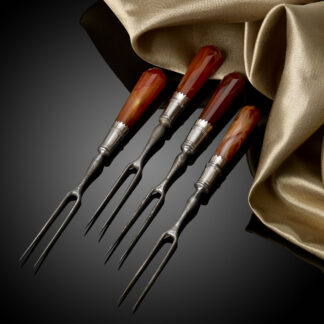
A rare set of four 17th Century William & Mary sweetmeat forks
£750.00 -
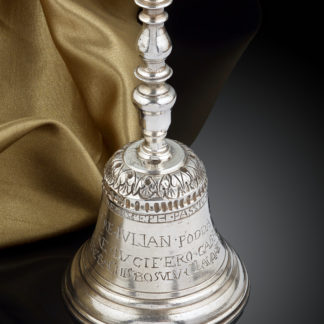
South American Silver Table Bell
£5,950.00 -
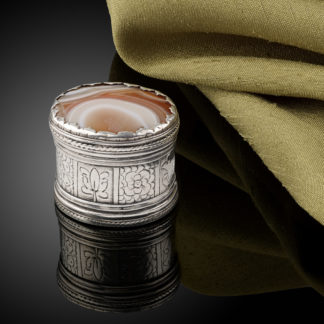
A rare Charles I silver box with an agate set lid c.1640
£2,450.00 -
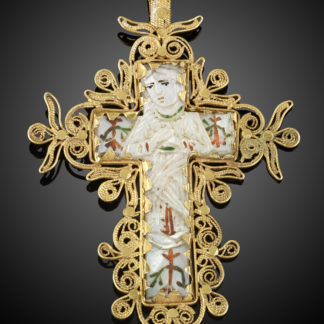
A Sri Lankan – Portuguese Devotional Pendant c.1700
£1,750.00 -
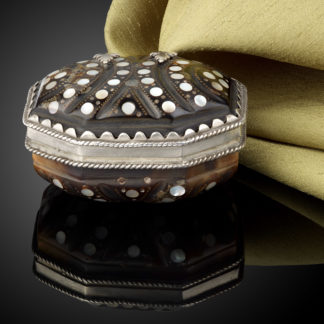
French Renaissance Tortoiseshell Snuffbox c.1600 – 1620
£14,000.00 -
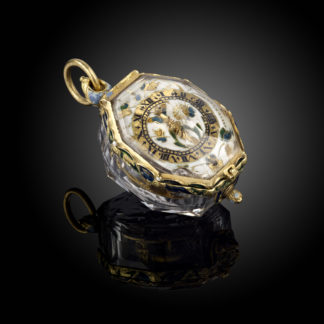
An Important Charles I Period Verge Watch London c.1640; the maker David Bouquet I
£65,000.00 -
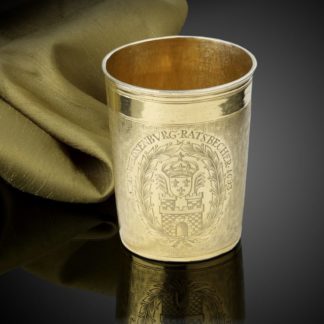
A Silver Gilt Strasbourg ‘Magistrate’s Beaker’ 1693
£14,000.00 -
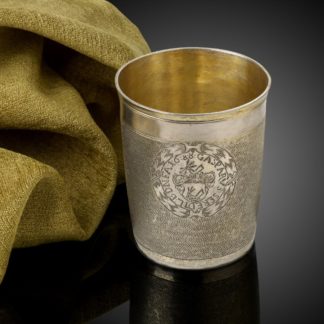
A Hungarian Silver Gilt Beaker 1688
£5,750.00
